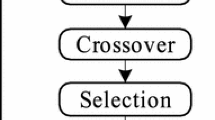Abstract
As a static network, the slow learning of back propagation (BP) neural network is an insurmountable disadvantage facing dynamic system identification. In contrast, dynamic neural network provides a potential choice, representing the development direction of neural network modeling, identification and control. Based on dynamic Elman network, a new learning neural network structure, called fast learning neural network, is proposed in this paper. It not only conforms to the basic characteristics of biological neural network, but also has the advantages of simple algorithm, fast learning convergence and high identification accuracy of linear and non-linear systems. Based on the experimental data, this network is applied to the identification of the motion model of modular robots to obtain the non-linear kinematics model of robots. Therefore, this kind of neural network is very suitable for robot kinematics model identification and motion control. The simulation results show that it is appropriate to identify the kinematics model and control the motion of the robot based on fast learning neural network; and the combination of fast learning and ELM network speeds up the training efficiency.









Similar content being viewed by others
References
Aflakian A, Safaryazdi A, Masouleh MT, Kalhor A (2018) Experimental study on the kinematic control of a cable suspended parallel robot for object tracking purpose. Mechatronics 50:160–176
Balter ML, Chen AI, Maguire TJ, Yarmush ML (2017) Adaptive kinematic control of a robotic venipuncture device based on stereo vision, ultrasound, and force guidance. IEEE Trans Ind Electron 64(2):1626–1635
Brahmi B, Saad M, Lam JTAT, Luna CO, Archambault PS, Rahman MH (2018) Adaptive control of a 7-dof exoskeleton robot with uncertainties on kinematics and dynamics. EUR J Control 42:77–87
Chen MC, Lu SQ, Liu QL (2018) Global regularity for a 2D model of electro-kinetic fluid in a bounded domain. Acta Math Appl Sin-E 34(2):398–403
Chikhaoui B, Mihailidis Ye BA (2018) Aggressive and agitated behavior recognition from accelerometer data using non-negative matrix factorization. J Ambient Intell Human Comput 9(5):1375–1389. https://doi.org/10.1007/s12652-017-0537-x
Gao B, Zhu Z, Zhao J, Jiang L (2017) Inverse kinematics and workspace analysis of a 3 dof flexible parallel humanoid neck robot. J Intell Robot Syst 87(2):211–229
Garcia-Rodriguez R, Parra-Vega V (2017) Normal and tangent force neuro-fuzzy control of a soft-tip robot with unknown kinematics. Eng Appl Artif Intel 65:43–50
Ha J, Fagogenis G, Dupont PE (2019) Modeling tube clearance and bounding the effect of friction in concentric tube robot kinematics. IEEE Trans Robot 35(2):353–370
Hwang KS, Jiang WC, Chen YJ, Shi H (2017) Motion segmentation and balancing for a biped robot’s imitation learning. IEEE Trans Ind Inform 13(3):1099–1108
Liarokapis M, Dollar AM (2018) Combining analytical modeling and learning to simplify dexterous manipulation with adaptive robot hands. IEEE Trans Autom Sci Eng 16(3):1361–1372. https://doi.org/10.1109/TASE.2018.2885801
Lu YS, Lin YY (2018) Smooth motion control of rigid robotic manipulators with constraints on high-order kinematic variables. Mechatronics 49:11–25
Lu SQ, Chen MC, Liu QL (2018) On regularity for an Ericksen-Leslie’s parabolic-hyperbolic liquid crystals model. ZAMM-Z Angew Math Mech 98:1574–1584. https://doi.org/10.1002/zamm.201700080
Nabavi SN, Enferadi Akbarzadeh AJ (2018) A study on kinematics and workspace determination of a general 6-P US robot. J Intell Robot Syst 91(3–4):351–362. https://doi.org/10.1007/s10846-017-0704-5
Park H, Kwak B, Bae J (2018) Inverse kinematics analysis and cog trajectory planning algorithms for stable walking of a quadruped robot with redundant dofs. J Bionic Eng 15(4):610–622
Sathyanarayana S, Satzoda R, Sathyanarayana S et al (2018) J Ambient Intell Human Comput 9:225. https://doi.org/10.1007/s12652-015-0328-1
Sun Y, Xu J, Qiang H et al (2019) B adaptive neural-fuzzy robust position control scheme for maglev train systems with experimental verification. IEEE Trans Ind Electron 66(11):8589–8599
Tan LN (2018) Omnidirectional vision-based distributed optimal tracking control for mobile multi-robot systems with kinematic and dynamic disturbance rejection. IEEE Trans Ind Electron 65(7):5693–5703. https://doi.org/10.1109/TIE.2017.2782245
Tanaka M, Tanaka K (2017) Control of a snake robot for ascending and descending steps. IEEE Trans Robot 31(2):511–520
Vallabh P, Malekian R (2018) Fall detection monitoring systems: a comprehensive review. J Ambient Intell Human Comput 9(6):1809–1833. https://doi.org/10.1007/s12652-017-0592-3
Wu G (2017) Kinematic analysis and optimal design of a wall-mounted four-limb parallel schönflies-motion robot for pick-and-place operations. J Intell Robot Syst 85(3–4):1–15
Wu Y, Löwe H, Carricato M, Li Z (2017) Inversion symmetry of the euclidean group: theory and application to robot kinematics. IEEE Trans Robot 32(2):312–326
Yang C, Chen C, He W et al (2018) Robot learning system based on adaptive neural control and dynamic movement primitives. IEEE Trans Neural Netw Learn Syst 30(3):777–787
Zhang Y, Li S, Kadry S et al (2018) Recurrent neural network for kinematic control of redundant manipulators with periodic input disturbance and physical constraints. IEEE Trans Cybernet 13:1–12. https://doi.org/10.1109/TCYB.2018.2859751
Zhao X, Dou L, Su Z, Liu N (2018) Study of the navigation method for a snake robot based on the kinematics model with mems imu. Sensors 18(3):879
Author information
Authors and Affiliations
Corresponding author
Additional information
Publisher's Note
Springer Nature remains neutral with regard to jurisdictional claims in published maps and institutional affiliations.
Rights and permissions
About this article
Cite this article
Sun, X. Kinematics model identification and motion control of robot based on fast learning neural network. J Ambient Intell Human Comput 11, 6145–6154 (2020). https://doi.org/10.1007/s12652-019-01459-z
Received:
Accepted:
Published:
Issue Date:
DOI: https://doi.org/10.1007/s12652-019-01459-z




